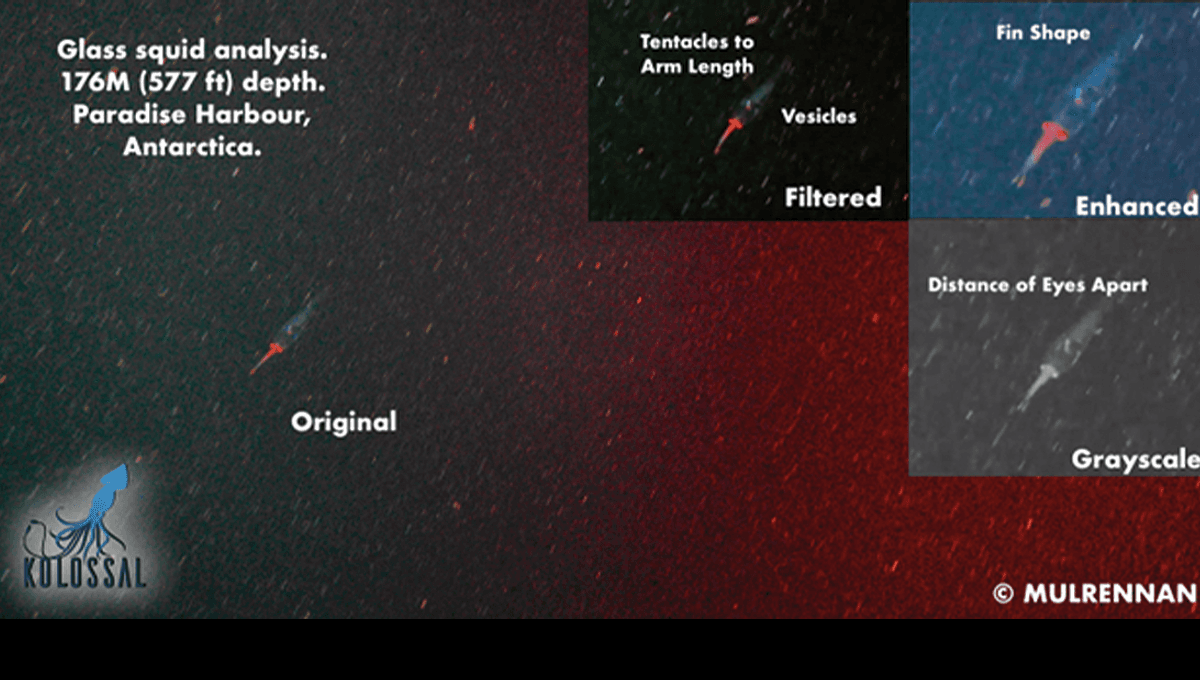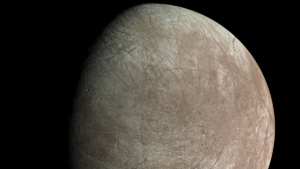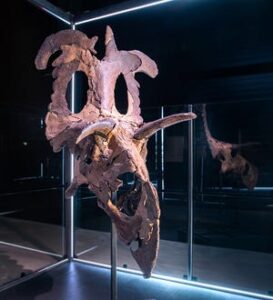The colossal squid (Mesonychoteuthis hamiltoni) is one of the great mysteries of the ocean. There are no photos or footage of a live colossal squid in its natural environment. What we know about this ocean beast is learned from the few specimens found in fishing nets or washed up on beaches.
An international research team has come up with an ambitious plan to find and study colossal squid in their natural home by 2025, the 100th anniversary of the species’ discovery. Between December 2022 and March 2023, the team traveled four times to Antarctica to try to find the colossal squid. They used a polar tourism ship called Ocean Endeavour equipped with a deep-sea camera system that can be lowered to a maximum depth of 400 meters (1,312 ft).
The colossal squid is believed to have measured 14 meters (46 feet) and weighed at least 500 kilograms (1,100 pounds). It is a multiple world record holder, taking the title of the world’s largest invertebrate (at least in terms of weight). This elusive species is believed to live in the deep sea in the Southern Ocean around Antarctica.
While the team was unable to find an adult, they did capture footage of a glass squid that measured 10-12 centimeters (3.9-4.7 inches). This footage is currently being analyzed and may show either an unknown species or an adult Galiteuthis glacialis squids, or the first footage of a tiny juvenile colossal squid ever recorded. It appears at 2 minutes 33 seconds into the video below.
“Colossal squids are a huge poster child for how little we know about the ocean,” said Matt Mulrennan, marine scientist, leader of the four 2022-2023 expeditions and founder/CEO of the nonprofit Kolossal, in a statement sent to IFLScience.
Glass squid are scientifically known as the Cranchiidae family, which includes both colossal squid and Galiteuthis glacialis species belong. These are the only Cranchidae known to live in these Antarctic conditions.
“The two known Cranchiidae taxa observed in Antarctica are Galiteuthis glacialis and Mesonychoteuthis hamiltoni. The squids seen here could belong to different life stages of any of these taxa – and are an exciting example of wild cranichoid behavior, as I can’t think of any existing video footage of any of these squids in their natural environment,” said Dr Aaron Evans, who studies the family Cranchiidae and reviewed the footage.
The footage shows large amounts of marine snow, which is organic matter, falling into the deep ocean; this obscures the view of the mysterious squid as it appears.
“Identifying glass squid from footage can be difficult; some species have unique combinations of visible traits, but other groups of species look similar enough that it is very difficult to confirm which they are from images alone,” said Dr Kat Bolstad from Auckland University of Technology (AUT), who is an expert on a colossal squid and was also reviewing the footage.
As well as the squid footage, the team captured a range of other deep-sea creatures – more than 80 different species, including giant volcanic sponges, Antarctic sunflower stars and numerous species of shelly, soft corals, siphonophores and crinoids.
Giant volcanic mushrooms are believed to be among the oldest living animals in the world, believed to live up to 15,000 years.
Image credit: © KOLOSSAL / MULRENNAN
“This glass squid sighting adds to the 100-year mystery surrounding the search for the colossal squid, as the true identification may ultimately never be established.” But during these exciting expeditions, we also engaged many people – from students to retirees – in the spirit of ocean exploration and discovered that Antarctica’s remote water depths are alive, unique and worthy of protection,” Mulrennan concluded.



